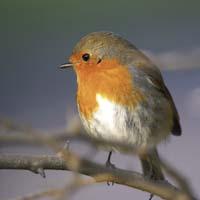The eye compass serves to guide the txantxangorriak

An ocular protein that varies depending on the magnetic field exerts the function of compass
A study at Oldenburg University in Germany reveals that the petitioners are guided by a protein in their eyes. As they have explained, this protein, cryptochrome, varies according to Earth's magnetic field and birds take advantage to know where to go. It has been released in the journal Nature.
Scientists have proposed several possible explanations to explain the orientation based on the magnetic field and at the University of Oldenburg have tested two of them with petirrojo in two experiments. In one of them, the nerve that joins the beak with the brain was cut, to see if the iron crystals that carry several corners in the beak fulfill the function of the compass. In the other experiment, birds damaged the part of the brain that processes the changes of cryptochrome, cluster N.
They have seen that only the birds of the second experiment lost the capacity of orientation. In addition, the reds affected by cluster N also lost the ability to recognize the magnetic field. This has shown that this area of the brain that processes the reactions of the cryptochrome of the eyes is essential to properly guide birds.





